10 Best Herbal Juices For Menstrual Cramps
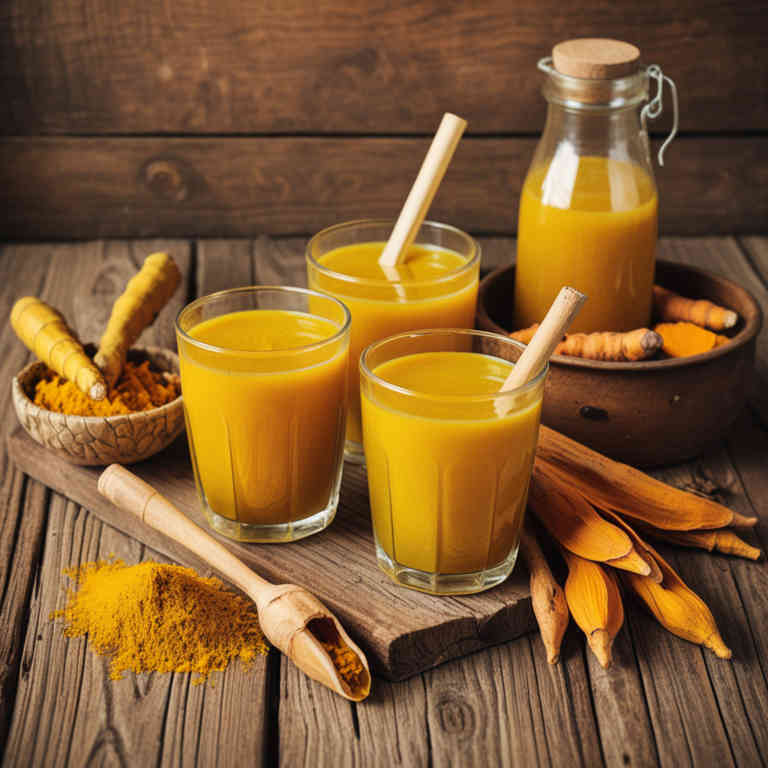
Herbal juices can be a natural and effective way to alleviate menstrual cramps by providing essential nutrients and anti-inflammatory properties.
Ingredients like ginger, turmeric, and parsley are commonly used in herbal juices due to their ability to reduce pain and inflammation. Ginger helps in improving blood circulation and reducing nausea, while turmeric contains curcumin, which has strong anti-inflammatory effects. Parsley is known for its ability to ease cramping and support hormonal balance.
Incorporating these herbal juices into a balanced diet can offer a gentle, holistic approach to managing menstrual discomfort.
FREE Herb Drying Checklist
How to make sure every batch retains maximum flavor, color, and aroma without the risk of mold or over-drying. Eliminate guesswork and trial-and-error, making herb drying faster, easier, and more efficient every time.
Table of Contents
1. Curcuma longa

Curcuma longa, commonly known as turmeric, contains a bioactive compound called curcumin, which has potent anti-inflammatory and analgesic properties.
Herbal juices made from turmeric root can help alleviate menstrual cramps by reducing inflammation and pain in the uterine lining. These juices are often combined with other herbs like ginger or black pepper to enhance absorption and effectiveness. Regular consumption of turmeric-based herbal juices may support hormonal balance and improve overall menstrual health.
However, it is advisable to consult a healthcare provider before using turmeric as a remedy, especially for those with existing health conditions or on medication.
2. Zingiber officinale

Zingiber officinale, commonly known as ginger, has been widely used for its medicinal properties, including its ability to alleviate menstrual cramps.
Ginger contains compounds like gingerol and shogaol, which have anti-inflammatory and analgesic effects that help reduce pain and inflammation associated with menstruation. Consuming ginger in the form of herbal juices can provide a natural and effective remedy for women experiencing dysmenorrhea. These juices are often prepared by blending fresh ginger root with water, lemon, or honey, enhancing both flavor and therapeutic benefits.
Regular intake of ginger herbal juice may help regulate menstrual flow and ease discomfort, making it a popular complementary therapy for menstrual health.
3. Vitex agnus-castus

Vitex agnus-castus, commonly known as chasteberry, has been traditionally used to support hormonal balance and alleviate symptoms associated with menstrual cramps.
Herbal juices made from vitex are believed to help regulate menstrual cycles and reduce pain by influencing the production of luteinizing hormone and prolactin. These juices may also contain antioxidants and phytoestrogens that contribute to their soothing effects on the reproductive system. While some studies suggest potential benefits, it is important to consult a healthcare provider before using vitex, especially for those with existing medical conditions or taking other medications.
Overall, vitex herbal juices offer a natural alternative for women seeking relief from menstrual discomfort, though results may vary.
4. Rosa canina

Rosa canina, also known as rose hip, is a traditional herbal remedy that has been used for centuries to support women's health, particularly in alleviating menstrual cramps.
The juice extracted from its dried fruits is rich in antioxidants, vitamins, and essential nutrients that help reduce inflammation and ease pain during menstruation. Its anti-inflammatory properties may help relax the uterine muscles, thereby decreasing the intensity of cramps. Many natural health practitioners recommend rosa canina juice as a gentle, plant-based alternative to conventional pain relievers.
When consumed regularly, it may also contribute to overall hormonal balance and improve mood during the menstrual cycle.
5. Salvia officinalis
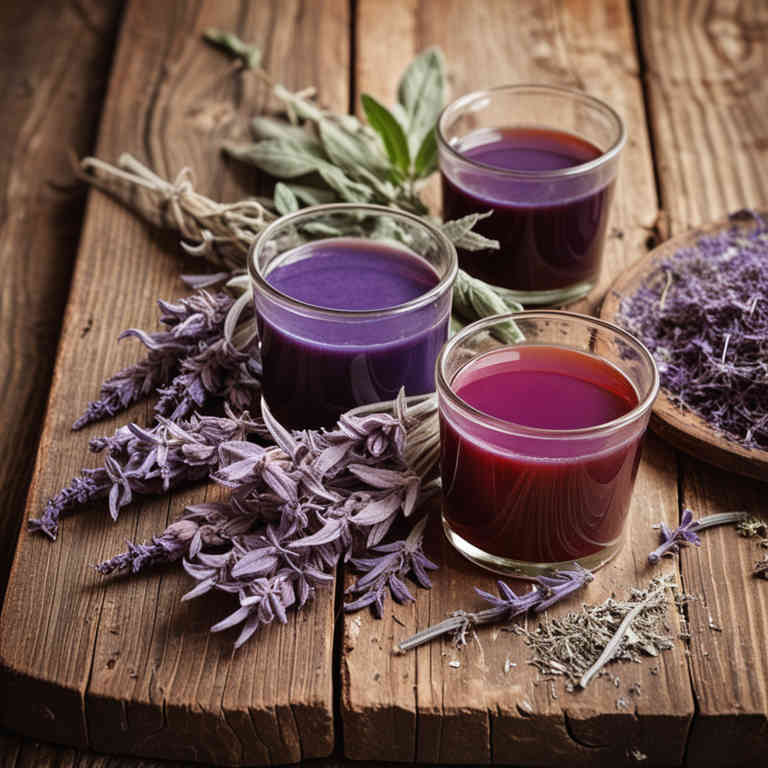
Salvia officinalis, commonly known as sage, has been traditionally used for its medicinal properties, including its potential to alleviate menstrual cramps.
Herbal juices made from sage leaves are believed to contain compounds that may help reduce uterine contractions and ease pain associated with menstruation. These juices are often prepared by steeping fresh or dried sage leaves in water or juice extract, allowing the active components to be absorbed. While some studies suggest that sage may have anti-inflammatory and antispasmodic effects, it is important to consult a healthcare provider before using sage for menstrual issues, as it can interact with certain medications.
Overall, sage herbal juice may offer a natural alternative for managing menstrual discomfort, though more research is needed to confirm its efficacy and safety.
6. Foeniculum vulgare
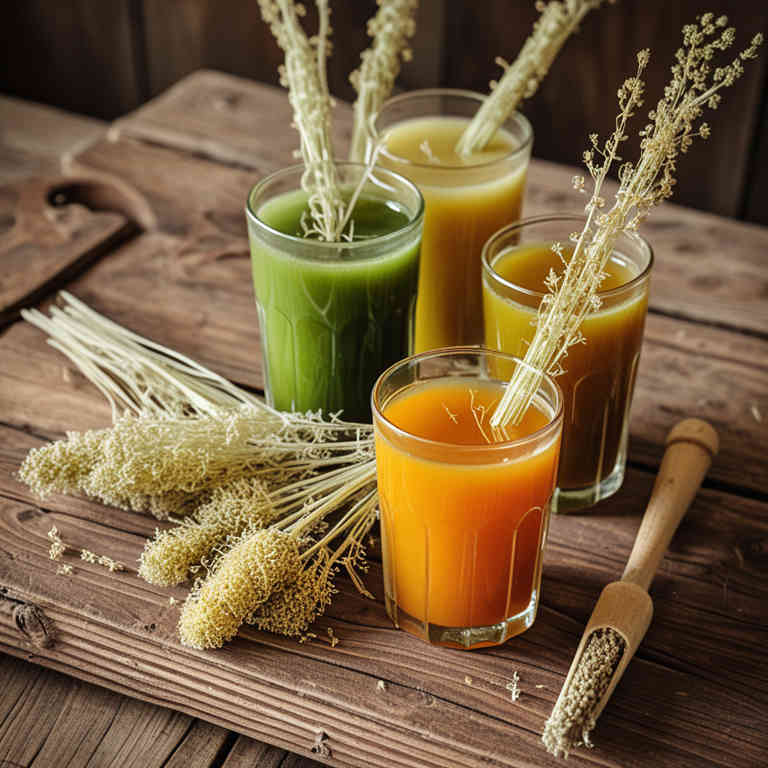
Foeniculum vulgare, commonly known as fennel, has been traditionally used to alleviate menstrual cramps due to its antispasmodic and analgesic properties.
The essential oils and compounds found in fennel, such as anethole and estragole, help relax uterine muscles and reduce pain associated with menstruation. Herbal juices made from fresh fennel seeds or leaves can be consumed as a natural remedy to ease cramping and promote smooth menstrual flow. These juices are often recommended for their calming effects and ability to support hormonal balance during the menstrual cycle.
However, it is advisable to consult a healthcare professional before using fennel juice, especially for pregnant women or those with existing health conditions.
7. Cuminum cyminum
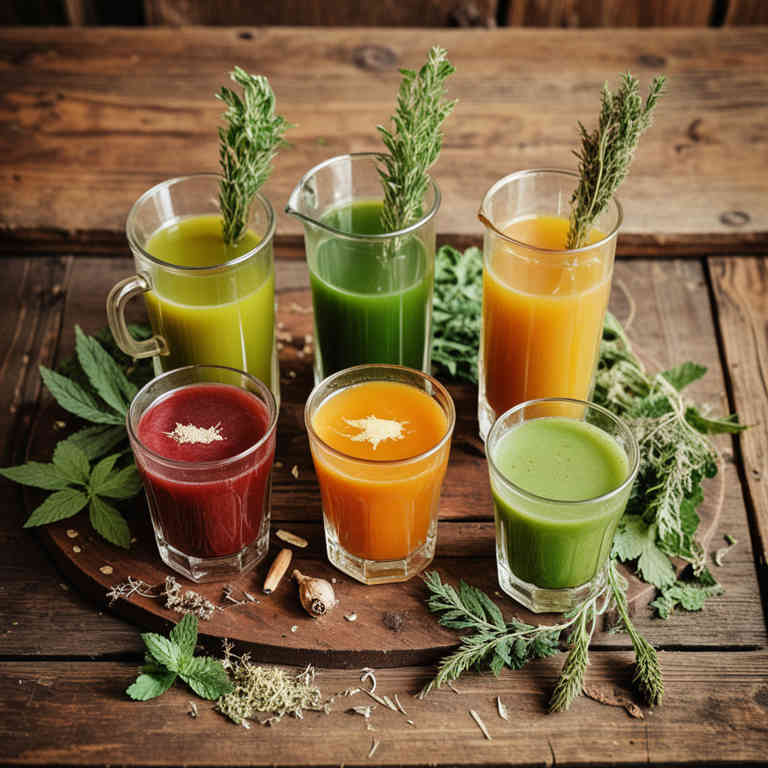
Cuminum cyminum, commonly known as cumin, is a versatile herb that has been traditionally used to alleviate menstrual cramps due to its warming and antispasmodic properties.
When consumed as a herbal juice, cumin can help reduce the severity of cramps by promoting smooth muscle relaxation in the uterus. The essential oils in cumin, such as limonene and terpinene, are believed to have anti-inflammatory and analgesic effects that support menstrual comfort. To prepare the juice, fresh cumin seeds are typically soaked, blended with water or a mild juice, and consumed in small quantities daily.
While cumin juice is generally safe, it is advisable to consult a healthcare provider before using it as a remedy, especially for those with existing health conditions or on medication.
8. Glycyrrhiza glabra
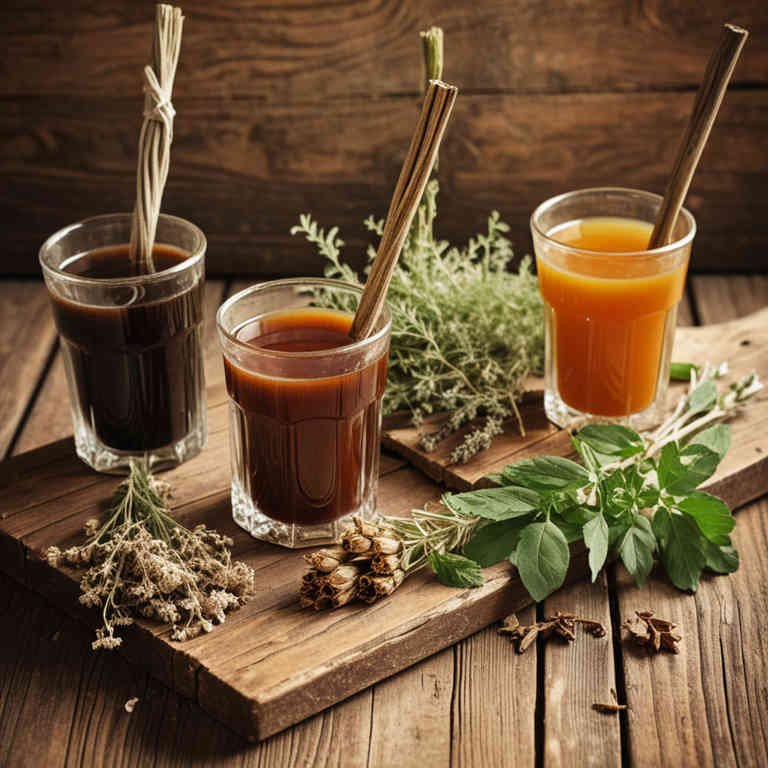
Glycyrrhiza glabra, commonly known as licorice root, has been traditionally used in herbal medicine for its potential to alleviate menstrual cramps.
The herb contains compounds like glycyrrhizin and flavonoids, which may help reduce inflammation and ease uterine contractions. Some studies suggest that licorice root may act as a mild antispasmodic, helping to relieve pain associated with dysmenorrhea. However, it is important to note that excessive consumption of licorice root can lead to side effects such as increased blood pressure due to its effects on the adrenal glands.
As with any herbal remedy, it is advisable to consult a healthcare provider before using licorice root juice for menstrual cramps, especially for individuals with preexisting health conditions.
9. Lavandula angustifolia
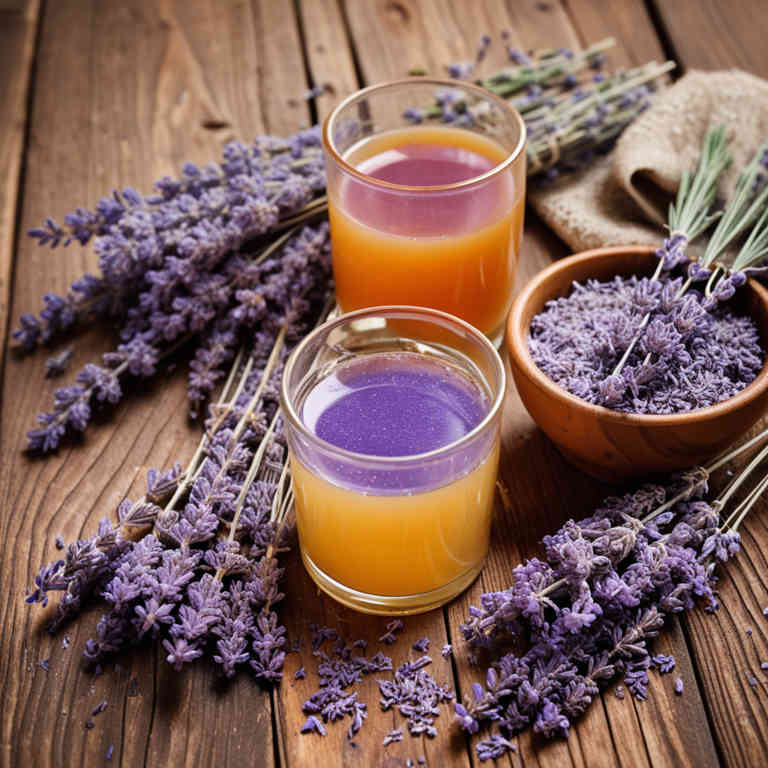
Lavandula angustifolia, commonly known as English lavender, has been traditionally used to alleviate symptoms of menstrual cramps due to its calming and anti-inflammatory properties.
When incorporated into herbal juices, lavender can help reduce pain and discomfort associated with menstruation by promoting muscle relaxation and reducing spasms. The essential oils and phytochemicals in lavender, such as linalool and flavonoids, contribute to its analgesic and antispasmodic effects. To prepare a lavender herbal juice, it is often combined with other soothing herbs like ginger or chamomile for enhanced benefits.
While lavender juice can be a natural complement to menstrual health, it is advisable to consult a healthcare provider before use, especially for those with existing medical conditions or who are pregnant.
10. Nymphaea alba
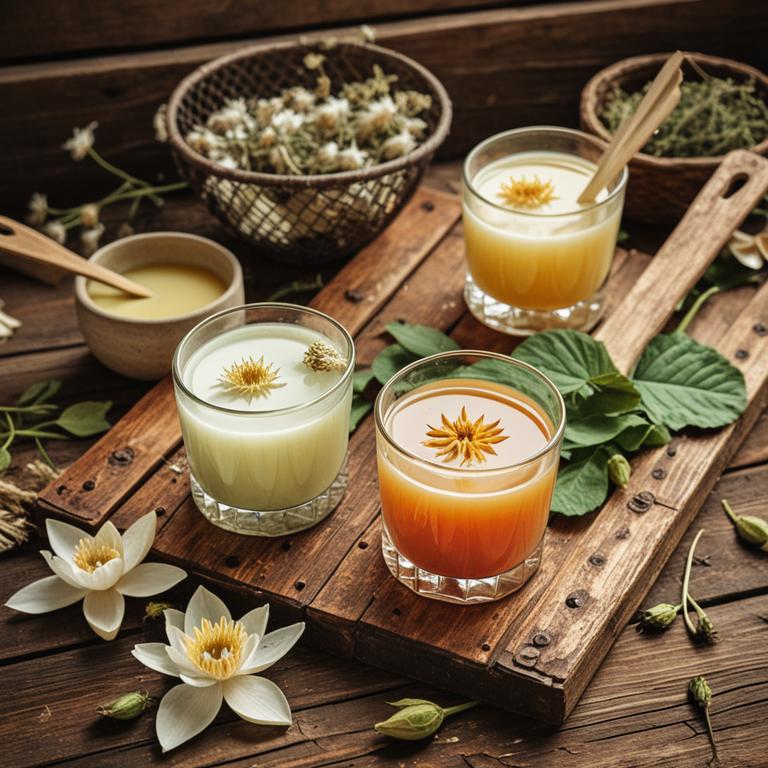
Nymphaea alba, also known as the white water lily, has been traditionally used in herbal medicine for its potential benefits in alleviating menstrual cramps.
The plant contains compounds such as flavonoids and alkaloids that may help reduce inflammation and ease muscle spasms associated with menstruation. Herbal juices made from Nymphaea alba are often prepared by blending the roots or leaves with other soothing herbs like ginger or chamomile to enhance their effectiveness. These natural remedies are considered gentle alternatives to conventional pain relievers, offering a holistic approach to managing menstrual discomfort.
However, it is important to consult with a healthcare provider before using Nymphaea alba to ensure safety and appropriateness for individual health conditions.